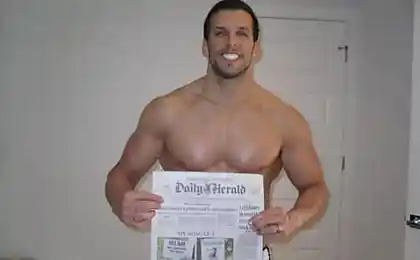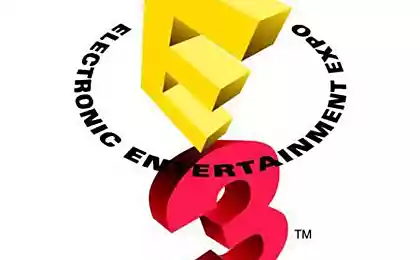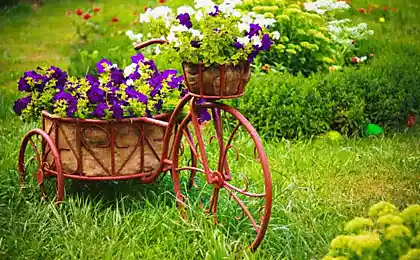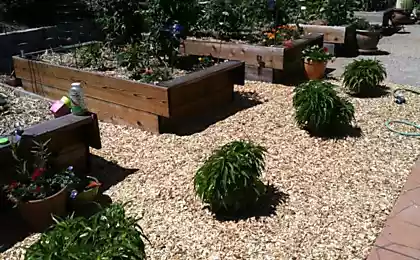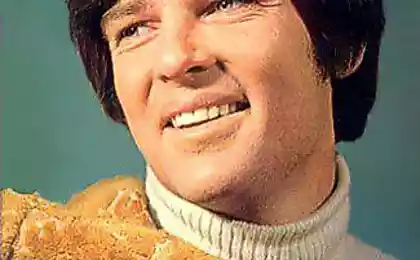190
Seasonal work in the garden - the first week of June
Here comes summer. With their joys and worries: the harvest is poured, ripens, but the pests do not sleep. The sun is baked - the garden and garden are asked for water. And the summer residents, as always, "plans hromada" - someone repairs the house, someone builds a bath, someone bridges the garden paths ...
In the garden, everything grows, and now on the beds and in greenhouses there are two main concerns: watering and weeding on time. At the same time, do not forget to loosen the soil so that air freely penetrates to the roots of plants, and moisture evaporates more slowly.
The beginning of June is the time of planting in open ground seedlings of heat-loving tomatoes, pepper and eggplant. However, the unusually warm and early spring in many regions significantly adjusted the timing. In greenhouses, tomatoes are formed, stepchildren are removed, tall plants are tied.
We plant seedlings of cabbage of medium-ripe varieties; grown-up early and late for the first time we finish. Depending on the timing of planting, it is time to till potatoes (you need to do this when the top reaches 18-20 cm in height).
Waiting for the harvest to rest and relax will not be possible: it is very important now to deal with the prevention of phytophthorosis, which in the middle of summer can destroy all tomatoes and thoroughly damage potato plantings. First, let’s find out what phytofluoro is. And then we will call on the help of folk methods to combat tomato phytofluorosis – we will always have time to resort to “chemistry”, it is better to cope with the problem with environmentally friendly methods if possible.
Pests appear on young cabbage. Very relevant at this time the fight against cruciferous fleas - these small, but very voracious midges can deprive us of the harvest, if you sit idly by.
At the time of the formation of fruits, plants need additional nutrition, so once again we recall the recipes for herbal supplements, talk about how to grow tomatoes without chemistry and discuss the use of bread as a fertilizer.
Garlic's already making a point. This is a good remedy for aphids, onion and spider mites, earwigs and other pests (arrows, along with other raw materials, are used to prepare insecticidal solutions that are sprayed with affected cultures). And yet, it turns out, there are a lot of recipes for delicious dishes using garlic arrows. Our readers share them in discussing the posts Garlic Arrows and Garlic gave Arrows. What are you doing with them?
In the garden is the time to ripen berries and fruits. Garden strawberries are poured, and it will not be superfluous to remember its secrets of success, or how to get an excellent harvest of garden strawberries.
Currant bushes are regularly inspected; noticing the drying branches, we cut them out - this is the result of the "work" of the currant glass. If there are pests, we spray the bushes without waiting for the enemy to destroy the crop. Since there is very little time left before harvesting the berries, it is better to use folk remedies or biological preparations - most chemicals should not be used later than 20-30 days before harvesting.
Note: if currant lacks moisture, it can shed ovaries, and the remaining berries will turn out small. Therefore, in dry weather, bushes should be watered at the rate of 30-50 liters per square meter of planting area.
And summer is the time to collect medicinal herbs, berries and other useful plant raw materials. Something grows right in our garden, for something we will walk in the forest or in the meadow. But in order not to waste time, and harvested herbs have benefited, you need to know when and how to properly harvest medicinal plants.
In flower gardens we plant seedlings of heat-loving annual and biennial plants. It is good to fill empty spaces in place of faded bulbs.
We install supports for grown lianas - tunbergia, fragrant peas and others. We feed peonies, irises, gladioli, dahlias.
The lilacs have faded inflorescences. In peonies, roses and other plants, to admire large flowers, stepsoning is used - the removal of small buds that appear in the sinuses of leaves below the main flower.
Lovers of roses will also be interested in the publication Breed roses themselves: 6 videos to help novice flower growers. It’s time to learn more about the “Queen of Flowers” to decorate your garden with new varieties.
Well, for those who have very little time, you should think about the arrangement of a "lazy" garden - which does not require special attention and care from the owner. How to do this, and what plants to choose for it, will tell the article “Lazy” garden and its inhabitants.
In warm weather, it is pleasant to walk barefoot on the silky green grass, lie on it, looking at the clouds floating in the sky. But the lawn that gives us this pleasure expects good care and care from its owner. Mowing, watering, treating - all this will have to be done regularly if you want to enjoy a smooth and beautiful lawn. But don't let that scare you! Useful tips and videos from the publication “Green lawn” – for the whole season, everyone will put in their places. Be sure to read and see if you are interested in the question of how to properly care for the lawn.
Source: www.7dach.ru
In the garden, everything grows, and now on the beds and in greenhouses there are two main concerns: watering and weeding on time. At the same time, do not forget to loosen the soil so that air freely penetrates to the roots of plants, and moisture evaporates more slowly.
The beginning of June is the time of planting in open ground seedlings of heat-loving tomatoes, pepper and eggplant. However, the unusually warm and early spring in many regions significantly adjusted the timing. In greenhouses, tomatoes are formed, stepchildren are removed, tall plants are tied.
We plant seedlings of cabbage of medium-ripe varieties; grown-up early and late for the first time we finish. Depending on the timing of planting, it is time to till potatoes (you need to do this when the top reaches 18-20 cm in height).
Waiting for the harvest to rest and relax will not be possible: it is very important now to deal with the prevention of phytophthorosis, which in the middle of summer can destroy all tomatoes and thoroughly damage potato plantings. First, let’s find out what phytofluoro is. And then we will call on the help of folk methods to combat tomato phytofluorosis – we will always have time to resort to “chemistry”, it is better to cope with the problem with environmentally friendly methods if possible.
Pests appear on young cabbage. Very relevant at this time the fight against cruciferous fleas - these small, but very voracious midges can deprive us of the harvest, if you sit idly by.
At the time of the formation of fruits, plants need additional nutrition, so once again we recall the recipes for herbal supplements, talk about how to grow tomatoes without chemistry and discuss the use of bread as a fertilizer.
Garlic's already making a point. This is a good remedy for aphids, onion and spider mites, earwigs and other pests (arrows, along with other raw materials, are used to prepare insecticidal solutions that are sprayed with affected cultures). And yet, it turns out, there are a lot of recipes for delicious dishes using garlic arrows. Our readers share them in discussing the posts Garlic Arrows and Garlic gave Arrows. What are you doing with them?
In the garden is the time to ripen berries and fruits. Garden strawberries are poured, and it will not be superfluous to remember its secrets of success, or how to get an excellent harvest of garden strawberries.
Currant bushes are regularly inspected; noticing the drying branches, we cut them out - this is the result of the "work" of the currant glass. If there are pests, we spray the bushes without waiting for the enemy to destroy the crop. Since there is very little time left before harvesting the berries, it is better to use folk remedies or biological preparations - most chemicals should not be used later than 20-30 days before harvesting.
Note: if currant lacks moisture, it can shed ovaries, and the remaining berries will turn out small. Therefore, in dry weather, bushes should be watered at the rate of 30-50 liters per square meter of planting area.
And summer is the time to collect medicinal herbs, berries and other useful plant raw materials. Something grows right in our garden, for something we will walk in the forest or in the meadow. But in order not to waste time, and harvested herbs have benefited, you need to know when and how to properly harvest medicinal plants.
In flower gardens we plant seedlings of heat-loving annual and biennial plants. It is good to fill empty spaces in place of faded bulbs.
We install supports for grown lianas - tunbergia, fragrant peas and others. We feed peonies, irises, gladioli, dahlias.
The lilacs have faded inflorescences. In peonies, roses and other plants, to admire large flowers, stepsoning is used - the removal of small buds that appear in the sinuses of leaves below the main flower.
Lovers of roses will also be interested in the publication Breed roses themselves: 6 videos to help novice flower growers. It’s time to learn more about the “Queen of Flowers” to decorate your garden with new varieties.
Well, for those who have very little time, you should think about the arrangement of a "lazy" garden - which does not require special attention and care from the owner. How to do this, and what plants to choose for it, will tell the article “Lazy” garden and its inhabitants.
In warm weather, it is pleasant to walk barefoot on the silky green grass, lie on it, looking at the clouds floating in the sky. But the lawn that gives us this pleasure expects good care and care from its owner. Mowing, watering, treating - all this will have to be done regularly if you want to enjoy a smooth and beautiful lawn. But don't let that scare you! Useful tips and videos from the publication “Green lawn” – for the whole season, everyone will put in their places. Be sure to read and see if you are interested in the question of how to properly care for the lawn.
Source: www.7dach.ru
Scientists have created a vaccine against Alzheimer's disease
Treatment of adhesions of the pelvic organs








